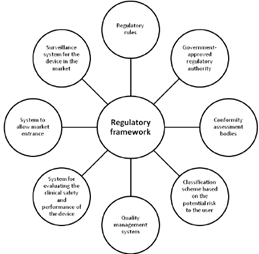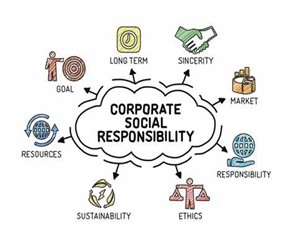Analyzing the role of governance in mitigating business-induced environmental harm

Analyzing the role of governance in mitigating business-induced environmental harm
by vivienne 05:21pm Jan 02, 2025

Governance plays a crucial role in mitigating business-induced environmental harm by creating and enforcing frameworks that guide businesses toward more sustainable and responsible practices. Good governance helps ensure that businesses are held accountable for their environmental impact, promotes transparency, and incentivizes the adoption of green technologies and practices. Here’s a detailed analysis of how governance can mitigate business-induced environmental harm:
1. Regulatory Frameworks and Legal Standards
Environmental Regulations and Legislation: Effective governance ensures that businesses are subject to regulations that limit harmful environmental practices. Laws governing emissions, waste management, air and water pollution, and land use compel companies to reduce their environmental impact.
o For example, environmental impact assessments (EIA) are mandatory in many countries for major infrastructure projects, forcing businesses to consider the long-term environmental consequences of their activities.
o Regulations like the Clean Air Act in the U.S. and the EU Emissions Trading System (ETS) directly target harmful emissions from businesses, creating legal obligations to reduce pollutants.
-
International Agreements and Compliance: Strong governance can facilitate participation in global environmental agreements such as the Paris Agreement, which sets targets for reducing global greenhouse gas emissions. Countries that are signatories to such agreements can enforce national regulations that hold businesses accountable for their contributions to climate change.

2. Incentivizing Sustainable Business Practices
Subsidies and Tax Incentives: Governments can use fiscal tools like subsidies, tax credits, and grants to encourage businesses to adopt greener practices. These incentives can make sustainability more financially attractive, driving innovation in clean technologies, renewable energy, and sustainable production processes.
· For instance, tax credits for renewable energy installations, such as solar panels or wind turbines, incentivize businesses to reduce their reliance on fossil fuels.
Research and Development (R&D) Support: Good governance also involves investing in R&D to advance environmentally friendly technologies. Public funding and partnerships with private businesses can accelerate the development of green solutions such as energy-efficient technologies, electric vehicles, and carbon capture systems.
3. Corporate Social Responsibility (CSR) and Ethical Standards
Accountability through CSR: Corporate governance structures that emphasize CSR ensure that businesses take responsibility for their environmental impact. CSR frameworks require businesses to not only focus on profitability but also on their environmental footprint, social equity, and governance practices.
· Effective governance can encourage businesses to align their goals with sustainability, ensuring that environmental impacts are considered alongside financial performance. For example, sustainable supply chains and fair trade practices reduce the environmental harm caused by resource extraction and production.
-
Ethical Business Conduct: Companies governed by strong ethical standards are more likely to adopt practices that prioritize long-term environmental sustainability over short-term profits. This may include eco-labeling, responsible sourcing, and ensuring that business operations do not contribute to deforestation or habitat destruction.

4. Transparency and Reporting
Environmental Reporting and Disclosure: Governance frameworks that require businesses to disclose their environmental impact (e.g., carbon emissions, waste production, water usage) help hold them accountable for their actions. Reporting frameworks like the Global Reporting Initiative (GRI) and the Task Force on Climate-related Financial Disclosures (TCFD) guide companies in transparently communicating their environmental risks and sustainability efforts.
Public Access to Information: Transparent governance ensures that businesses' environmental practices are open to public scrutiny. This creates pressure for businesses to adopt sustainable practices to maintain their reputation and meet the expectations of investors, consumers, and other stakeholders.
5. Environmental Governance and Enforcement
Regulatory Agencies and Enforcement: Strong governance ensures that environmental laws are not only written but also enforced. Agencies such as the Environmental Protection Agency (EPA) in the U.S. or the European Environment Agency (EEA) monitor business activities, conduct inspections, and impose penalties for non-compliance with environmental regulations.
Penalties for Non-compliance: Effective governance uses fines, sanctions, and other penalties to enforce environmental standards. Businesses are less likely to engage in environmentally harmful practices if they know there are consequences for non-compliance, such as fines, legal action, or damage to their reputation.
6. Stakeholder Engagement and Social Pressure
Public and Consumer Pressure: Governance can facilitate public participation and give a voice to civil society organizations, environmental activists, and consumers, who often push for businesses to adopt more sustainable practices.
· Environmental advocacy groups play a key role in holding businesses accountable for environmental harm by lobbying for stronger laws, conducting campaigns, and applying pressure through boycotts or consumer choices.
-
Corporate Governance and Stakeholder Theory: In systems where businesses are governed by stakeholder theory (rather than solely focusing on shareholder profit), companies are expected to consider the interests of not just shareholders but also employees, local communities, and the environment. This broadens the scope of corporate responsibility, encouraging businesses to minimize environmental harm.

7. Climate Change Mitigation and Adaptation
Governments as Leaders in Climate Action: Effective governance involves taking a leadership role in mitigating climate change. Policies that promote energy transition, carbon pricing, and the development of climate-resilient infrastructures influence business operations.
· Cap-and-trade systems or carbon taxes force businesses to internalize the cost of their carbon emissions, incentivizing them to adopt low-carbon technologies and reduce their environmental impact.
Adaptation to Climate Risks: Governance frameworks should also ensure that businesses are preparing for the impacts of climate change. This includes adopting climate-resilient business models, particularly for industries like agriculture, construction, and insurance, which may face heightened environmental risks.
8. Fostering Green Economy and Innovation
Sustainable Development Goals (SDGs): Good governance aligns business practices with international frameworks like the United Nations Sustainable Development Goals (SDGs). These goals focus on environmental sustainability, including affordable and clean energy (SDG 7), climate action (SDG 13), and life on land and below water (SDGs 14 and 15).
-
Green Jobs and Economic Growth: Governance that supports the green economy can stimulate new business opportunities by fostering industries centered on sustainability, such as renewable energy, energy efficiency, waste management, and eco-tourism. These industries can create jobs and drive economic growth while mitigating environmental harm.

Conclusion
Governance is essential for mitigating business-induced environmental harm by establishing legal frameworks, setting ethical standards, providing incentives, and enforcing compliance. A combination of strong regulations, corporate accountability, transparent reporting, and public participation ensures that businesses are incentivized to adopt green technologies and practices. Effective governance fosters a balance between economic growth and environmental protection, steering businesses toward more sustainable practices that benefit both the planet and society.






